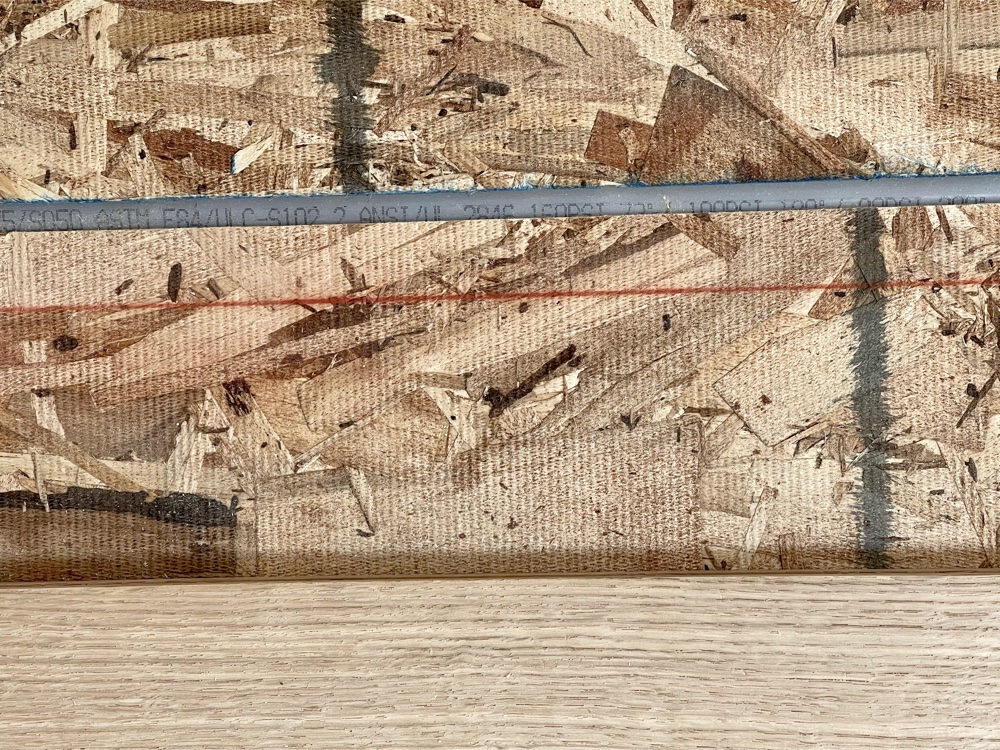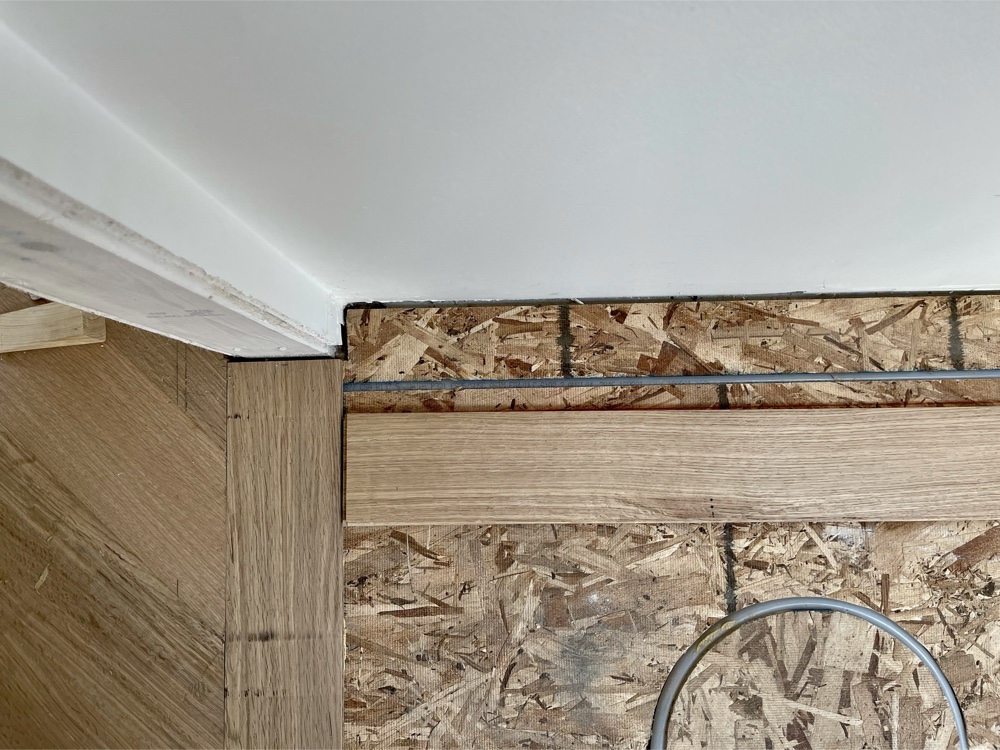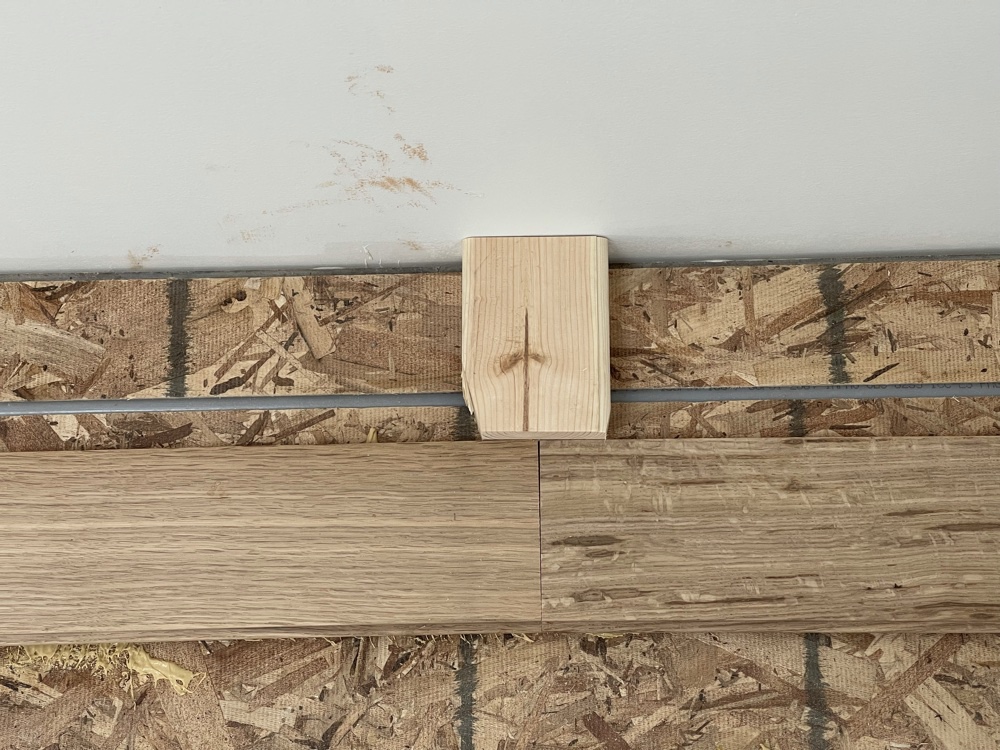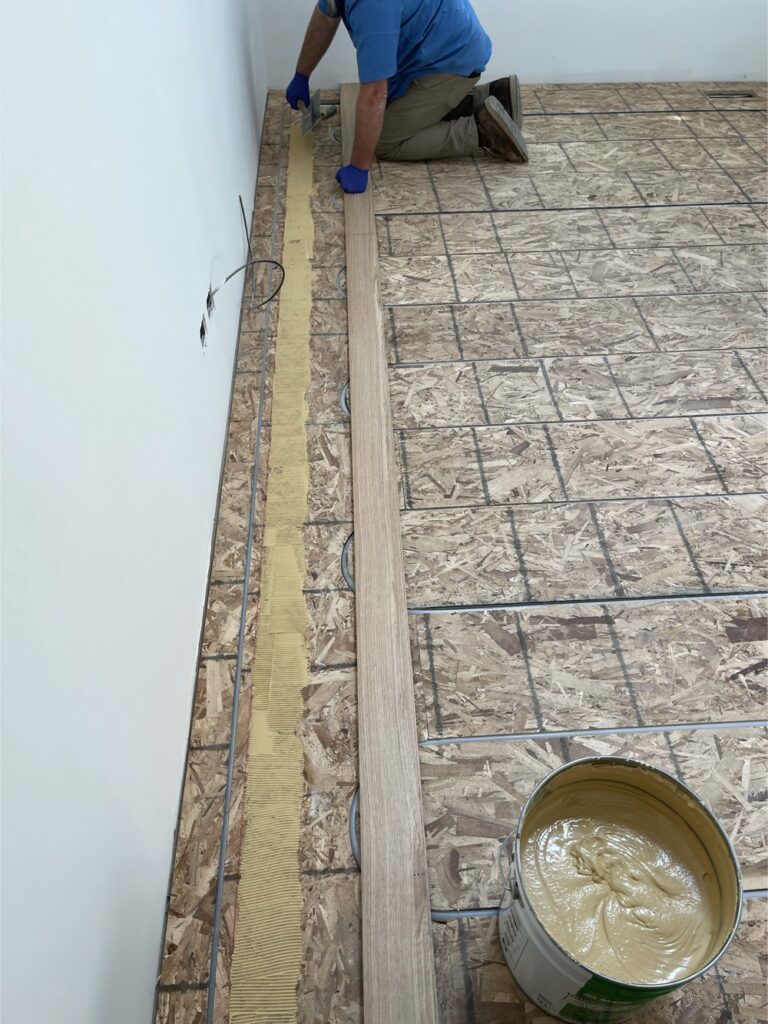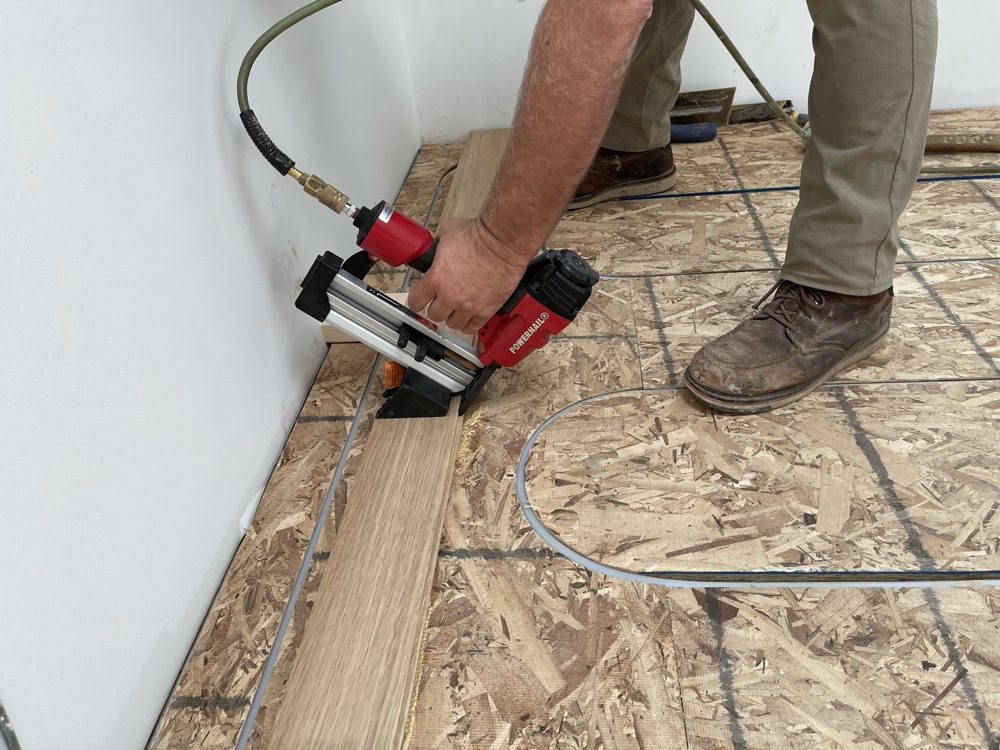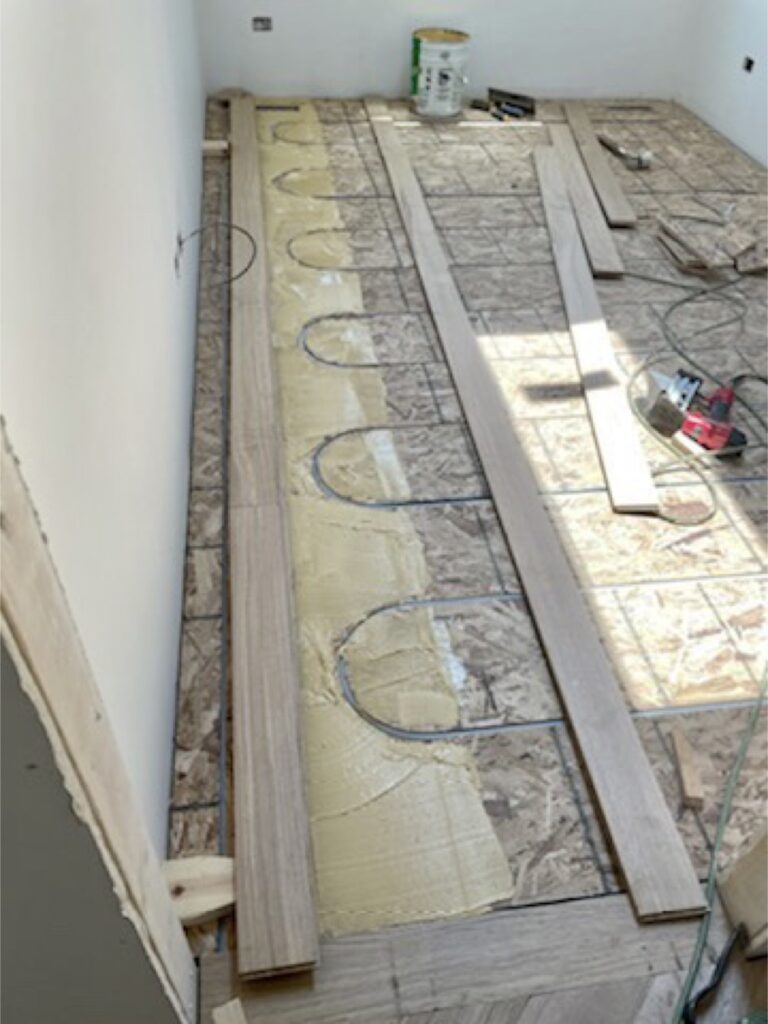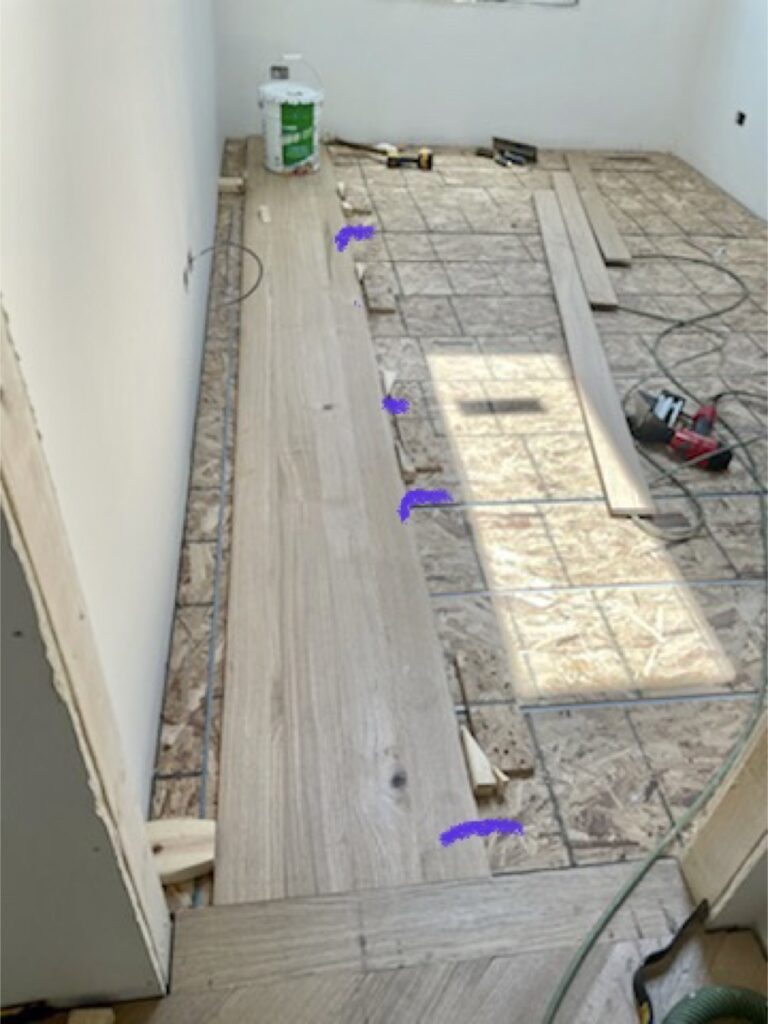As some of you may recall I harvested white oak trees and turned them into the floor planks for the townhouse that I’m renovating. This process involved cutting rough planks from logs and then drying them using a vacuum kiln. The dried wood was further processed using a moulder to cut and process them into flooring.
Although this process was done with great care it lacked the precision of a commercial flooring operation. In addition, the planks were being placed on a subfloor where I had installed radiant heating tubes. This combination of issues led me to go to extraordinary lengths to secure the flooring to the subfloor. See the photos below.
